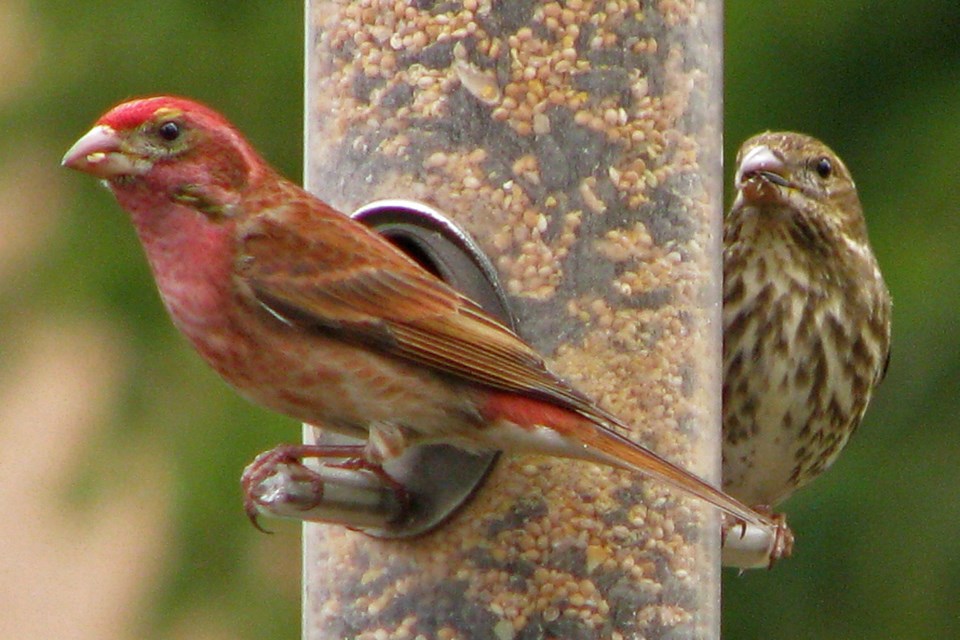Large turkey vultures normally in Mexico by now were sighted in record numbers soaring around Greater Victoria but little brown skylarks were nowhere to be seen during Saturday’s Christmas Bird Count around Greater Victoria.
Despite rain and dreary weather, as many as 200 bird lovers took part in the annual citizens’ science project, sighting 139 species from 7:30 until 6:14 p.m., Christmas Bird Count coordinator Ann Nightingale said.
“That’s a little below average but not much, and it could go up,” she said in early afternoon Sunday, before all of the teams had fully reported.
There were 21 teams out in the 24-kilometre radius centring on the Marigold area of Saanich — some of which had 16 or more members fanning out.
The most unusual sighting was the return of the red knot, unusual because it’s a species in global decline and on the threatened list in the U.S. “It’s more commonly seen on the east coast rather than the west. It is known for site loyalty, so I suspect the one we saw yesterday is the same bird that wintered here last year. The first time we ever had one on the Victoria Christmas Bird Count was last year.”
The three boat teams did not get out because of the wild weather, but the Trail Island Lighthouse keeper is sending in a report.
Many of the specific birds that Nightingale hoped would be spotted, such as the Wilson’s warbler and Townsend’s solitaire, did not show up, although the latter has been sighted recently in the Jocelyn Hill area.
“Probably our biggest miss this year is the skylark,” she said. Introduced by the Victoria Natural History Society from England more than a century ago, they no longer find nearly as many open farmers’ fields in which to nest other than Martindale Flats and Victoria International Airport, she said.
Then there were those 18 turkey vultures, likely here due to climate change, she said, and extending their northern range. Normally, they would winter as far south as the southern tip of South America
They do provide a service to the local environment. she notes. Otherwise, “we’d be up to our necks in carrion without scavengers — that includes the gulls too.”
Two Bonaparte’s gulls were sighted — normally seen only in spring for the Qualicum area herring spawn and in fall migration starting in July.
This year marked more emphasis on bird feeders. More than 100 people took part in the feeder watch, more than double the number of participants last year, Nightingale said.
“Looks like we will have a lot more than in previous years. So far, no rarities, but I’m happy to look at pictures if anyone took them.” Send them to victoriacbc@naturevictoria.ca
In 2014, Victoria reclaimed the title for the highest number of species (146) seen on the official count day in Canada, beating rival Ladner’s 141. Whether or not Victoria holds on to its title is not known. “We won’t know because Ladner is counting Sunday,” she said.
The bird count was founded by scientist and writer Frank Chapman and changed the course of ornithological history, Nightingale said in a release.
On Christmas Day in 1900, a small group posed an alternative to the “side hunt,” a Christmas day activity in which teams competed to see who could shoot the most birds and small mammals. Instead, Chapman proposed that they identify, count, and record all the birds they saw, founding what is now considered to be the world's most significant citizen-based conservation effort — and a more than century-old institution.
Since Chapman’s retirement in 1934, new generations of observers have performed the modern-day count. Today, more than 71,000 volunteers from all 50 states, every Canadian province, parts of Central and South America, Bermuda, the West Indies and Pacific Islands count and record every individual bird and bird species seen in a specified area.
The count is vital in monitoring the status of resident and migratory birds across the Western Hemisphere, and the data, which are 100 per cent volunteer generated, have become a crucial part of Canada’s biodiversity monitoring database.
The Sidney/South Salt Spring count on Dec. 14 sighted a preliminary total 124 species, while Sooke will have its count Dec. 28 and is still looking for participants. Contact sookecbc@naturevictoria.ca
This is a corrected version of an earlier story.



